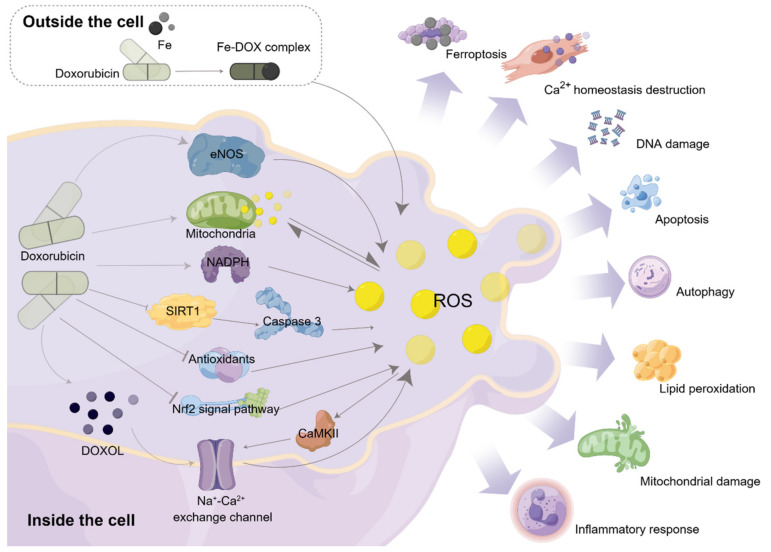Figure 3.
Schematic diagram of the occurrence and development of oxidative stress in DIC. DOX enters the body and produces ROS mainly through the following ways, mediating oxidative stress; DOX combines with eNOS to induce DOX, generating ROS; DOX binds to the inner mitochondrial membrane to form complexes, alters cardiolipin function, and produces ROS; DOX forms Fe-DOX complexes with Fe, which contribute to ROS production; under the action of the NOX enzyme, DOX reacts with NADPH to generate ROS; DOXOL, a metabolite of DOX, inhibits the sodium-calcium exchange channel, causing an imbalance in the level of Ca2+ in the cell, and produces ROS, which inhibits CaMKII and aggravates the imbalance of Ca2+ level; excessive consumption of antioxidants; downregulation of Nrf2 pathway expression; DOX treatment significantly inhibited SIRT1 deacetylase activity and protein levels, and promoted deubiquitination of p53 and activation of caspase-3. The above seven ways are involved in DOX-induced oxidative stress, individually or synergistically.

